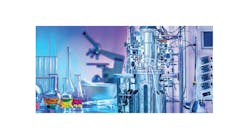The presentation by Greyssi Campos, control systems engineer at Wyeth-Ayerst Lederle, showed how S88 was used to improve process batch control and plant operations at Wyeth's pharmaceutical plant in Carolina, Puerto Rico.
This plant produces various antibiotics using a variety of different recipes. "Prior to our S88 implementation, it was very difficult to modify existing recipes or create new recipes," said Campos. "Each recipe change had to be validated, and no recipe could be modified without the involvement of control system engineers. This was very time consuming and unwieldy," she added.
"No recipe could be modified without the involvement of control system engineers." Wyeth's Greyssi Campos on the pharmaceutical company's cumbersome batch management procedures before its S88 RSBatch implementation.
Campos refers to the physical model as defining the production equipment's capabilities. Control modules represent items such as pumps and valves. Each item is controlled by standard controller code and represented by standard human-machine interface graphics.
Control modules, in turn, are combined to create equipment modules; equipment modules and control modules together make up units. "The beauty of S88 is that control modules are standard building blocks of code and graphics that can be combined and linked to form equipment modules and units," according to Campos.
The S88 procedural model is where the process engineers and operators create and modify recipes. Wyeth refers to this model as defining what is to be done with the equipment. Process engineers and operators use Rockwell Automation's RSBatch to drag-and-drop unit operations to create recipes. Examples of unit operations are adding materials, mixing materials and discharging materials. This is consistent with the S88 definition of a unit as an operation that contains materials, performs a processing action, and contains only one lot of material at a time.
When a new recipe is created or an existing recipe is modified, Wyeth now only needs to validate the recipe itself because all of the unit operations that were combined and linked to create the recipe were previously validated.
"Before we implemented S88, each recipe change required new code, new graphics, and validation of both in addition to validation of the recipe," Campos said. "S88 has saved us a tremendous amount of time and money by eliminating code and graphic validation when recipes are changed."




